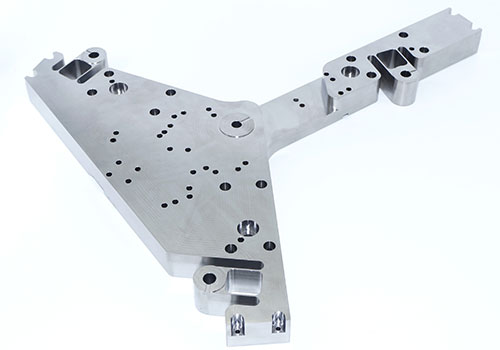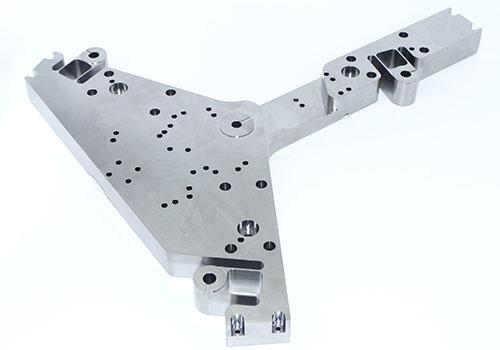After all of these years of doing machining, do you feel that you have developed any sort of appreciation for the material used for work blanks? Have you always made certain that the work blanks you use are made from the appropriate material? In relation to the work blanks, a sizeable quantity of information is currently at the user's disposal. Let's talk about what we know about work blanks today and have a conversation about it!
The determination of the work blank has an immediate and significant impact on the economics of the machining process. Because of this, when we are determining the work blank, we need to take into account both the factors that are involved in hot processing as well as the requirements that are involved in cold processing. Because the cost of producing the part is dependent on the determination of the blank, doing this is required in order for us to reduce the cost of producing the part.

1. The many distinct varieties of workblanks that are customarily incorporated into machining processes
Workblanks come in a wide variety of shapes, sizes, and materials, and each type of work blank can be crafted using a variety of techniques. The following is a list of some of the work blanks that are frequently used in the manufacturing of mechanical products:
A. Castings and castings
Casting is the technique that should be utilized in order to produce the work blank for complicated shapes. At the moment, the vast majority of castings are produced by using sand molds, which can be divided into two distinct categories: the first involves the molding of wooden molds by hand, whereas the second involves the molding of metal molds by means of a machine. Despite their low precision, large machining surface margin, and low productivity, wood mold castings can be used for single pieces, small batch production, or the casting of large parts. Castings made from wood molds are made from the wood itself. Castings that are produced using metal molds have a high level of productivity and precision, but they also have a high cost of equipment, and the castings can only be produced to a certain weight. It is ideally suited for the mass production of castings ranging in size from relatively small to relatively medium. With the help of specialized casting techniques (such as investment casting, pressure casting, centrifugal manufacturing, and so on), injection molding services is possible to produce low volumes of small castings that are held to stringent quality standards. This is possible even when the volume of castings produced is relatively low.
B. Forgings
When producing steel components that require a high level of mechanical strength on a consistent basis, forging work blanks are typically the tool of choice. There are two distinct types of forgings that can be carried out, and those are free forging and die forging. To achieve free forging, the process can be carried out either manually (using a hammer on a small blank), mechanically (using a press on a medium blank), or mechanically (using a press on a large blank). This type of forging has low precision, low productivity, a large machining allowance, and the structure of the part must be simple; it is suitable for both one-off production and production in small batches, as well as the manufacture of large forgings. In addition, this type of forging can be used to make large forgings.
Die forgings have better precision and surface quality than free forgings, and since the shape of forgings can be more complex, the machining allowance can be reduced. Die forgings also have an advantage over free forgings in terms of cost. Die forgings have an advantage over free forgings. Die forging has a significantly higher production rate in comparison to free forging; however, because it requires specialized tools and forging dies, it can only be used with forgings that are either large or medium in size.
C. Portraits
Sections can be categorized as round steel, square steel, hexagonal steel, flat steel, angle steel, opinion steel, and other special sections according to the shapes of their cross-sections. Other types of sections can be round, square, or hexagonal. In addition to these, there are also things called special sections. There are two distinct types of profiles, and those are hot rolled profiles and cold drawn profiles. Workblanks fabricated from hot-rolled profiles are widely used in a diverse range of industries as a result of their low cost and the low accuracy requirements that are imposed on them. Cold-drawn profiles have a high level of precision, a small size, and are simple to implement in an automatic feeding system. Cold-drawn profiles also have the advantage of being more cost-effective. However, their prices are high, and their primary use is in high-volume production, which is ideally suited for the processing capabilities of automatic machinery. This limits their applicability in other contexts.
Components and parts welded together
The process of welding results in the creation of combined parts that are referred to as "welded parts."Welded parts provide a number of benefits, including an easier manufacturing process, a shorter cycle, and a reduction in the amount of material that is utilized overall. The material has a low resistance to vibration, it easily deforms, and it can only be machined after first undergoing a treatment that simulates the effects of aging. All of these are negative aspects.
In addition, there is a wide selection of other types of workblanks that can be purchased, such as powder metallurgy parts, cold extrusion parts, stamped parts, and so on.

